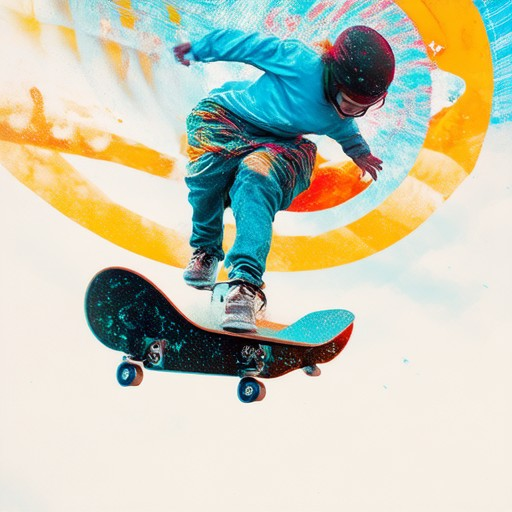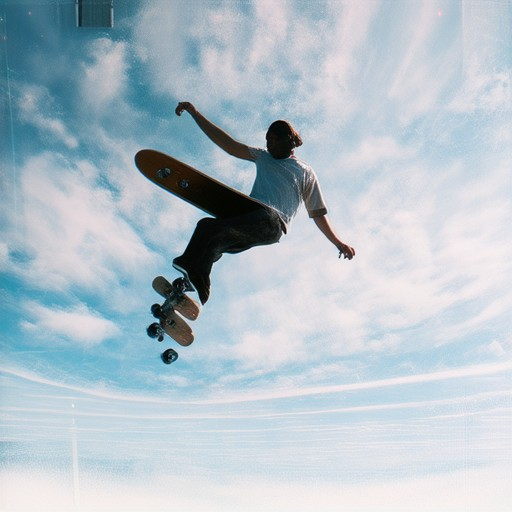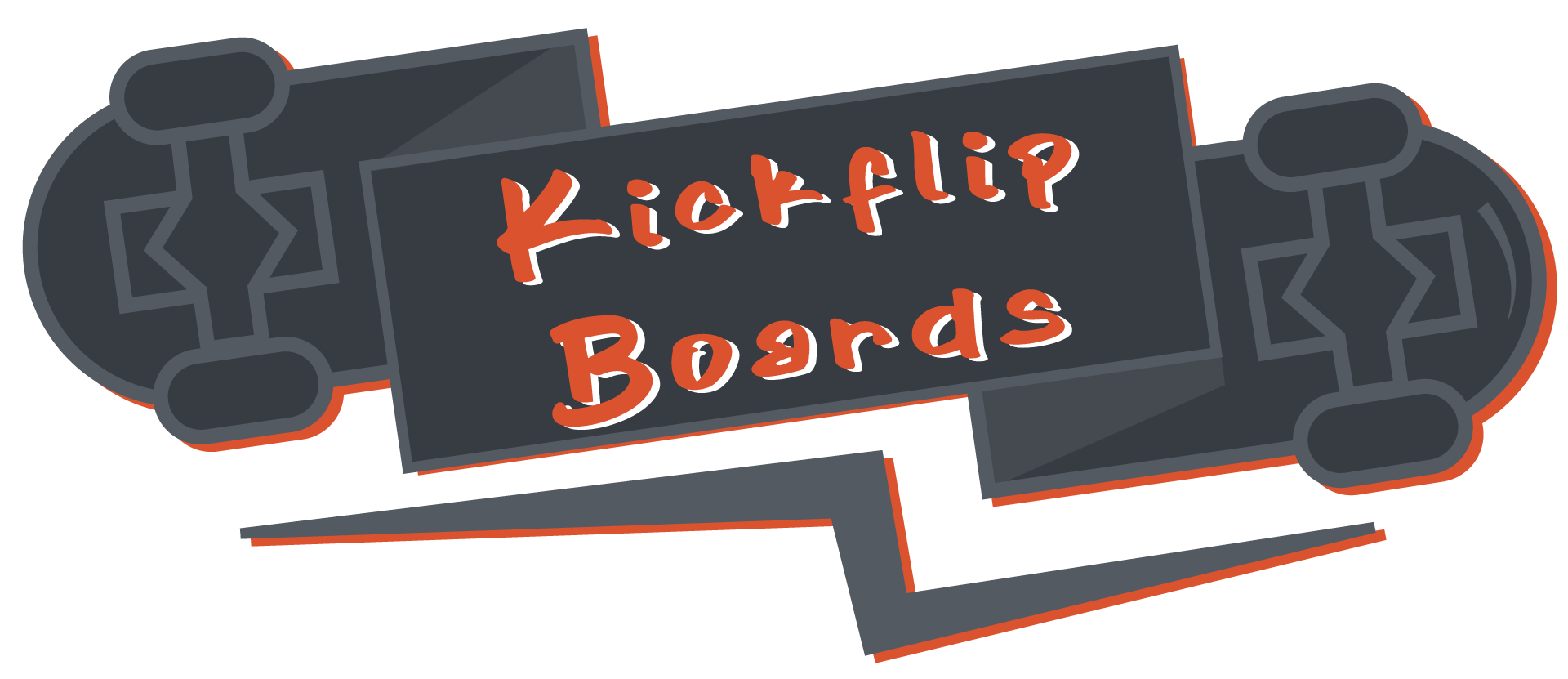Mastering skateboarding requires more than just stylish tricks—it demands a solid foundation in balance. While many riders excel in flipping kicks or grinding rails, maintaining stability on the board remains one of the most challenging yet essential skills to master. Whether you’re a novice looking to build confidence or a veteran aiming to perfect your technique, improving your skateboarding balance is key to progressing and staying in control. This comprehensive guide dives into proven strategies, exercises, and tips to help you achieve better balance on your skateboard. From understanding the importance of weight distribution and foot placement to exploring mental focus and strength training, we cover everything you need to stay steady on the board. With targeted practice and the right approach, you’ll not only enhance your balance but also elevate your overall riding experience. Let’s explore how to improve skateboarding balance and unlock your potential on the streets or parks.
Key Takeaways
- Master Proper Foot Placement: Position your front foot near the nose and back foot near the tail for optimal weight distribution and control.
- Experiment with Stance Variations: Try different stances like upright for ollies and slightly squatted for kickflips to enhance balance.
- Incorporate Wobble Board Training: Use a wobble board to improve balance and coordination through targeted exercises.
- Strengthen Legs and Core: Engage in leg-strengthening exercises like push-ups and planks to build stability.
- Practice Smooth Transitions: Focus on controlled drop-ins and pop-ups to maintain balance during tricks.
- Enhance Off-Board Balance: Perform daily drills like standing on one foot to boost overall balance and control.
- Invest in Skate-Specific Footwear: Choose shoes with superior grip and support for better board interaction.
- Maintain Mental Composure: Stay calm and focused using relaxation techniques to improve balance performance.
- Seek Regular Feedback: Track your progress and seek advice from experienced skaters to refine your technique.

Improving Skateboarding Balance: A Strategic Approach
Enhancing your skateboarding balance requires a combination of targeted practice, proper techniques, and consistent effort. By focusing on these key areas, you can develop better control and stability while riding.
1. Strengthening Exercises
Incorporate leg-strengthening exercises like squats and lunges to build the necessary muscle power and coordination. These exercises will provide a solid foundation for better balance and control on your skateboard.
2. Foot Placement and Stance
Experiment with different stances, such as regular and switch stance, to identify what works best for you. Pay attention to how your feet are positioned on the board to maximize stability and prevent slips.
3. Visualization Techniques
Practice visualization by closing your eyes and mentally picturing yourself in a balanced position on your skateboard. This mental exercise can help your brain adapt to the sensations of balance and control.
4. Diverse Surfaces
Challenge your balance by skating on various surfaces, including grass, gravel, and uneven terrain. This will help you adapt to different conditions and improve your overall balance.
5. Balance Drills
Engage in balance exercises like standing on one foot and gradually increasing the duration. Incorporate these drills into your practice routine to build strength and coordination.
6. Footwork Drills
Work on quick movements like stepping up, down, and side-to-side to enhance your agility and reaction time. These drills will make your footwork more precise and controlled.
7. Mental Focus
Develop a calm and concentrated mindset through mindfulness or meditation to maintain focus during maneuvers. Clearing your mind before skating can significantly improve your balance and control.
8. Progressive Overload
Gradually increase the difficulty of your balance exercises to keep progressing and improving over time. Start with simpler tasks and move on to more challenging ones as you gain confidence.
9. Seek Feedback
Observe skilled skaters and consider working with a coach to receive personalized advice. Their insights can help you identify areas for improvement and refine your technique effectively.
10. Consistency
Regular practice, ideally a few times per week, is essential for improving your balance. Even short sessions can lead to steady progress if you stay committed and focused.
By systematically addressing each of these areas, you can enhance your skateboarding balance and take your skills to the next level. With dedication and the right approach, you’ll enjoy a smoother, more confident riding experience.
Improving Skateboarding Balance: A Comprehensive Approach
Enhancing skateboarding balance requires a combination of targeted practice, proper techniques, and consistent effort. Here’s a structured plan to help you achieve better balance and control on your skateboard:
- Foot Placement and Stance:** – Practice proper foot placement by positioning your front foot near the nose of the board and your back foot near the tail. This allows better weight distribution and control. – Experiment with different stances for various tricks, such as a more upright stance forollies and a slight squat for kickflips.
- Wobble Board Exercises:** – Incorporate a wobble board into your routine to improve balance and coordination. Start with short sessions and gradually increase duration. – Find a wobble board online or use a similar unstable surface to practice standing and shifting weight without the skateboard.
- Leg and Core Strength:** – Engage in leg-strengthening exercises like push-ups, planks, and resistance band work to build muscle mass around your legs and core. – Look for routines specifically designed for skateboarders to target relevant muscles.
- Smooth Transitions:** – Practice dropping in and popping up with controlled movements. Focus on a slow, deliberate drop-in and a smooth pop-up to maintain balance. – Maintain a relaxed stance with knees bent and weight distributed evenly.
- Balance Drills Off-Board:** – Perform balance drills such as standing on one foot, heel-to-toe walking, and balancing on a cushion before boarding. – Aim for 10 minutes of these drills daily to improve overall balance.
- Proper Footwear:** – Invest in skate-specific shoes offering better grip and support. Check reviews or consult with a local skate shop for recommendations.
- Mental Focus and Relaxation:** – Stay calm and focused during practice. Engage in deep breathing exercises to maintain composure and visualize each move before execution.
- Progress Tracking and Feedback:** – Use apps or tools to track your progress and set achievable goals. – Seek feedback from experienced skaters or coaches to identify areas for improvement.
By focusing on these key areas, you can significantly enhance your skateboarding balance and control. Consistent practice, attention to detail, and a willingness to learn will lead to noticeable improvements over time.

Improving Skateboarding Balance: A Comprehensive Approach
Enhancing skateboarding balance requires a combination of targeted practice, proper techniques, and consistent effort. Here’s a structured plan to help you achieve better balance and control on your skateboard:
- Foot Placement and Stance:** – Practice proper foot placement by positioning your front foot near the nose of the board and your back foot near the tail. This allows better weight distribution and control. – Experiment with different stances for various tricks, such as a more upright stance forollies and a slight squat for kickflips.
- Wobble Board Exercises:** – Incorporate a wobble board into your routine to improve balance and coordination. Start with short sessions and gradually increase duration. – Find a wobble board online or use a similar unstable surface to practice standing and shifting weight without the skateboard.
- Leg and Core Strength:** – Engage in leg-strengthening exercises like push-ups, planks, and resistance band work to build muscle mass around your legs and core. – Look for routines specifically designed for skateboarders to target relevant muscles.
- Smooth Transitions:** – Practice dropping in and popping up with controlled movements. Focus on a slow, deliberate drop-in and a smooth pop-up to maintain balance. – Maintain a relaxed stance with knees bent and weight distributed evenly.
- Balance Drills Off-Board:** – Perform balance drills such as standing on one foot, heel-to-toe walking, and balancing on a cushion before boarding. – Aim for 10 minutes of these drills daily to improve overall balance.
- Proper Footwear:** – Invest in skate-specific shoes offering better grip and support. Check reviews or consult with a local skate shop for recommendations.
- Mental Focus and Relaxation:** – Stay calm and focused during practice. Engage in deep breathing exercises to maintain composure and visualize each move before execution.
- Progress Tracking and Feedback:** – Use apps or tools to track your progress and set achievable goals. – Seek feedback from experienced skaters or coaches to identify areas for improvement.
By focusing on these key areas, you can significantly enhance your skateboarding balance and control. Consistent practice, attention to detail, and a willingness to learn will lead to noticeable improvements over time.

Improving Skateboarding Balance: A Comprehensive Approach
Enhancing skateboarding balance requires a combination of targeted practice, proper techniques, and consistent effort. Here’s a structured plan to help you achieve better balance and control on your skateboard:
- Foot Placement and Stance:** – Practice proper foot placement by positioning your front foot near the nose of the board and your back foot near the tail. This allows better weight distribution and control. – Experiment with different stances for various tricks, such as a more upright stance forollies and a slight squat for kickflips.
- Wobble Board Exercises:** – Incorporate a wobble board into your routine to improve balance and coordination. Start with short sessions and gradually increase duration. – Find a wobble board online or use a similar unstable surface to practice standing and shifting weight without the skateboard.
- Leg and Core Strength:** – Engage in leg-strengthening exercises like push-ups, planks, and resistance band work to build muscle mass around your legs and core. – Look for routines specifically designed for skateboarders to target relevant muscles.
- Smooth Transitions:** – Practice dropping in and popping up with controlled movements. Focus on a slow, deliberate drop-in and a smooth pop-up to maintain balance. – Maintain a relaxed stance with knees bent and weight distributed evenly.
- Balance Drills Off-Board:** – Perform balance drills such as standing on one foot, heel-to-toe walking, and balancing on a cushion before boarding. – Aim for 10 minutes of these drills daily to improve overall balance.
- Proper Footwear:** – Invest in skate-specific shoes offering better grip and support. Check reviews or consult with a local skate shop for recommendations.
- Mental Focus and Relaxation:** – Stay calm and focused during practice. Engage in deep breathing exercises to maintain composure and visualize each move before execution.
- Progress Tracking and Feedback:** – Use apps or tools to track your progress and set achievable goals. – Seek feedback from experienced skaters or coaches to identify areas for improvement.
By focusing on these key areas, you can significantly enhance your skateboarding balance and control. Consistent practice, attention to detail, and a willingness to learn will lead to noticeable improvements over time.
Improving Skateboarding Balance: A Comprehensive Approach
Enhancing skateboarding balance requires a combination of targeted practice, proper techniques, and consistent effort. Here’s a structured plan to help you achieve better balance and control on your skateboard:
- Foot Placement and Stance:** – Practice proper foot placement by positioning your front foot near the nose of the board and your back foot near the tail. This allows better weight distribution and control. – Experiment with different stances for various tricks, such as a more upright stance forollies and a slight squat for kickflips.
- Wobble Board Exercises:** – Incorporate a wobble board into your routine to improve balance and coordination. Start with short sessions and gradually increase duration. – Find a wobble board online or use a similar unstable surface to practice standing and shifting weight without the skateboard.
- Leg and Core Strength:** – Engage in leg-strengthening exercises like push-ups, planks, and resistance band work to build muscle mass around your legs and core. – Look for routines specifically designed for skateboarders to target relevant muscles.
- Smooth Transitions:** – Practice dropping in and popping up with controlled movements. Focus on a slow, deliberate drop-in and a smooth pop-up to maintain balance. – Maintain a relaxed stance with knees bent and weight distributed evenly.
- Balance Drills Off-Board:** – Perform balance drills such as standing on one foot, heel-to-toe walking, and balancing on a cushion before boarding. – Aim for 10 minutes of these drills daily to improve overall balance.
- Proper Footwear:** – Invest in skate-specific shoes offering better grip and support. Check reviews or consult with a local skate shop for recommendations.
- Mental Focus and Relaxation:** – Stay calm and focused during practice. Engage in deep breathing exercises to maintain composure and visualize each move before execution.
- Progress Tracking and Feedback:** – Use apps or tools to track your progress and set achievable goals. – Seek feedback from experienced skaters or coaches to identify areas for improvement.
By focusing on these key areas, you can significantly enhance your skateboarding balance and control. Consistent practice, attention to detail, and a willingness to learn will lead to noticeable improvements over time.

Improving Skateboarding Balance: A Comprehensive Guide
Enhancing your skateboarding balance requires targeted practice and a solid understanding of proper techniques. By focusing on these key areas, you can significantly improve your stability and control on the board.
1. Foot Placement and Stance
- Proper Foot Placement : Position your front foot near the nose of the skateboard and your back foot near the tail. This allows for better weight distribution and control.
- Experiment with Stance : Try both regular and switch stances to broaden your skill range and improve overall balance.
2. Wobble Board Exercises
- Utilize a wobble board to practice balancing. Focus on maintaining a low and steady center of gravity. Start with short sessions and gradually increase duration for improved stability.
3. Strength Training
- Engage in leg exercises like squats and lunges to build strength and stability. These workouts target muscles crucial for skateboarding, enhancing your ability to hold the board steady.
4. Body Positioning
- Keep your knees bent and close to the board to maintain control. Avoid straightening your legs, as this can lead to instability.
5. Boot Taping
- Tape your boots to improve grip and connection with the board. This can reduce slippage and enhance balance during tricks.
6. Consistent Practice
- Dedicate time daily to practice these techniques. Even short sessions of 15-20 minutes can contribute to noticeable improvement.
7. Board Maintenance
- Ensure your skateboard is in good condition. Check wheels and deck for damage, as a well-maintained board provides a stable base for practice.
8. Train on Varied Surfaces
- Practice on uneven terrain to challenge your balance and concentration. This can translate well to real-world skateboarding conditions.
9. Health and Diet
- Maintain a balanced diet rich in proteins and nutrients. Stay hydrated to boost energy and focus, aiding in better balance and performance.
10. Embrace Falling
- View falling as a learning opportunity. Each mistake brings insight, so stay positive and persistent in your efforts.
By systematically addressing each of these areas, you can develop a stronger foundation for your skateboarding skills, leading to improved balance and confidence on the board.




0 Comments